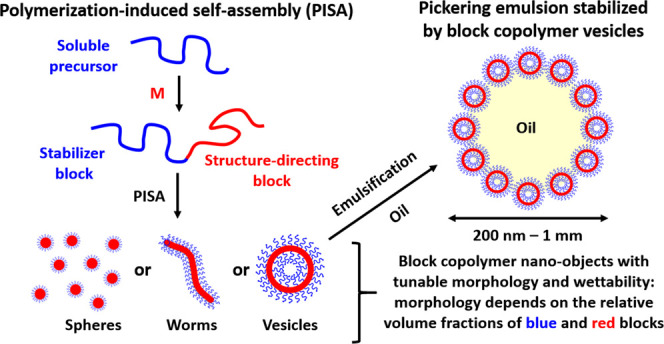- Record: found
- Abstract: found
- Article: not found
Pickering Emulsifiers Based on Block Copolymer Nanoparticles Prepared by Polymerization-Induced Self-Assembly

Read this article at
Abstract

Block copolymer nanoparticles prepared via polymerization-induced self-assembly (PISA) represent an emerging class of organic Pickering emulsifiers. Such nanoparticles are readily prepared by chain-extending a soluble homopolymer precursor using a carefully selected second monomer that forms an insoluble block in the chosen solvent. As the second block grows, it undergoes phase separation that drives in situ self-assembly to form sterically stabilized nanoparticles. Conducting such PISA syntheses in aqueous solution leads to hydrophilic nanoparticles that enable the formation of oil-in-water emulsions. Alternatively, hydrophobic nanoparticles can be prepared in non-polar media (e.g., n-alkanes), which enables water-in-oil emulsions to be produced. In this review, the specific advantages of using PISA to prepare such bespoke Pickering emulsifiers are highlighted, which include fine control over particle size, copolymer morphology, and surface wettability. This has enabled various fundamental scientific questions regarding Pickering emulsions to be addressed. Moreover, block copolymer nanoparticles can be used to prepare Pickering emulsions over various length scales, with mean droplet diameters ranging from millimeters to less than 200 nm.
Related collections
Most cited references241
- Record: found
- Abstract: not found
- Article: not found
Theory of self-assembly of hydrocarbon amphiphiles into micelles and bilayers
- Record: found
- Abstract: found
- Article: not found
